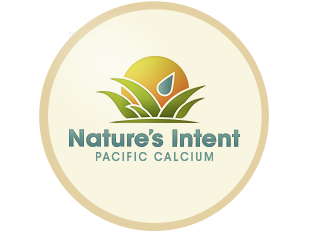Frequently Asked Questions
We encourage you to submit questions, tips and suggestions regarding organic farming and gardening via email.
What does calcium do?
Calcium (Limestone) is an essential nutrient for building strong cell walls, the building block of all plants. Stronger cell walls equate to a healthier, stress resistant plant.
What is humus and what are its characteristics?
Humus is a complex black substance that is created when organic matter decomposes. It is the glue that holds the particles together in what we call soil. Characteristics include:
Its origin can no longer be identified.
It resists further decomposition.
It has lost all its protein, fiber, and sugar.
What are humic acids and what do they do?
Humic acids are the water-soluble organic acids that are naturally present in soil organic matter. They physically improve the soil, chemically improve the properties of the soil, and biologically stimulate the plants.
What is soil composed of?
Soil is composed of 5% organic matter (humus), 45% rock minerals (clay, calcium rock, silica), 25% air, and 25% water.
What does tilth mean?
Tilth is the term used to describe the overall soil quality.
What is soil acidity and pH?
Soil becomes more "acid" when hydrogen ions replace other nutrient ions, such as magnesium and phosphorus, on the surface of the soil particles. The replaced ions leach downward in the soil water. Thus, the hydrogen ion level increases, which in turn, increases the acidity level. An increase in hydrogen ions can be attributed to the decomposition of organic matter, or to the addition of ammonia-based fertilizers.
pH is a measure of the concentration of hydrogen ions. A lower pH value means the greater the soil acidity.
What is lime?
Lime is the term used for crushed limestone. Limestone is mined as rock and is crushed mechanically to varying degrees of fineness. In most cases, lime is comprised primarily of calcium carbonate (CaCO3), also called calcite.
Some limestone may contain relatively high (5% to 12%) amounts of magnesium carbonate (MgCO3) as well as CaCO3. These materials are called dolomites. Dolomite should only be used in situations where soil analysis has shown a definite need for magnesium.
The agricultural benefits of applying lime to soil have been known since the time of the Roman Empire, but lime was first used specifically to change soil acidity levels in the mid-1800's by Virginia farmer Edmund Ruffin.
While this ability to neutralize soil acids is recognized to improve the availability of many nutrients, work in the decades around the Second World War by Dr. William A. Albrecht showed that calcium is also a key nutritional element.
Are your products safe for pets and livestock?
Do not worry if your animals are in the fields or yard while you are applying the products. Many of our products are actually feed to livestock.
Can I over-apply these products?
Not likely. You would have to really try to over-apply these products to harm the crops or pasture.
Will these products burn plants?
No. These products are non-burning and are made from the highest quality minerals and meals available. It is always advisable to test the soil prior to applying any fertilizer.
What about heavy metals?
Metals such as calcium, iron, manganese, copper, magnesium and zinc are all found in tablet form in health food sections of many grocery stores. Certain metals such as cadmium, lead and arsenic can be found in soils throughout the entire world. They are everywhere; in the foods you eat and the water you drink (excluding steam distilled water). The problem arises when certain raw materials contain an excessive amount.
Every fertilizer that is sold in the United States and Canada must be tested for heavy metals. They all must fall below certain thresholds determined by the Department of Agriculture for each state.
The heavy metal fertilizers product list can be found at:
http://www.aapfco.org/metals.htm
Pacific Calcium’s complete line of organic fertilizers fall well below the maximum allowable results.
Nitrogen response from Feathermeal?
You will see a nitrogen response from Feathermeal within 4-7 days of application if the weather conditions are good for solubilizing the proteins for plant up take. Once the feathermeal begins to release its nitrogen, it will release at a steady rate for approximately 3 months where 90-95% of all the nitrogen will be utilized by the plant or microorganisms. The remaining 5-10% will release for up to another 3 months, for a total of 6 months.

